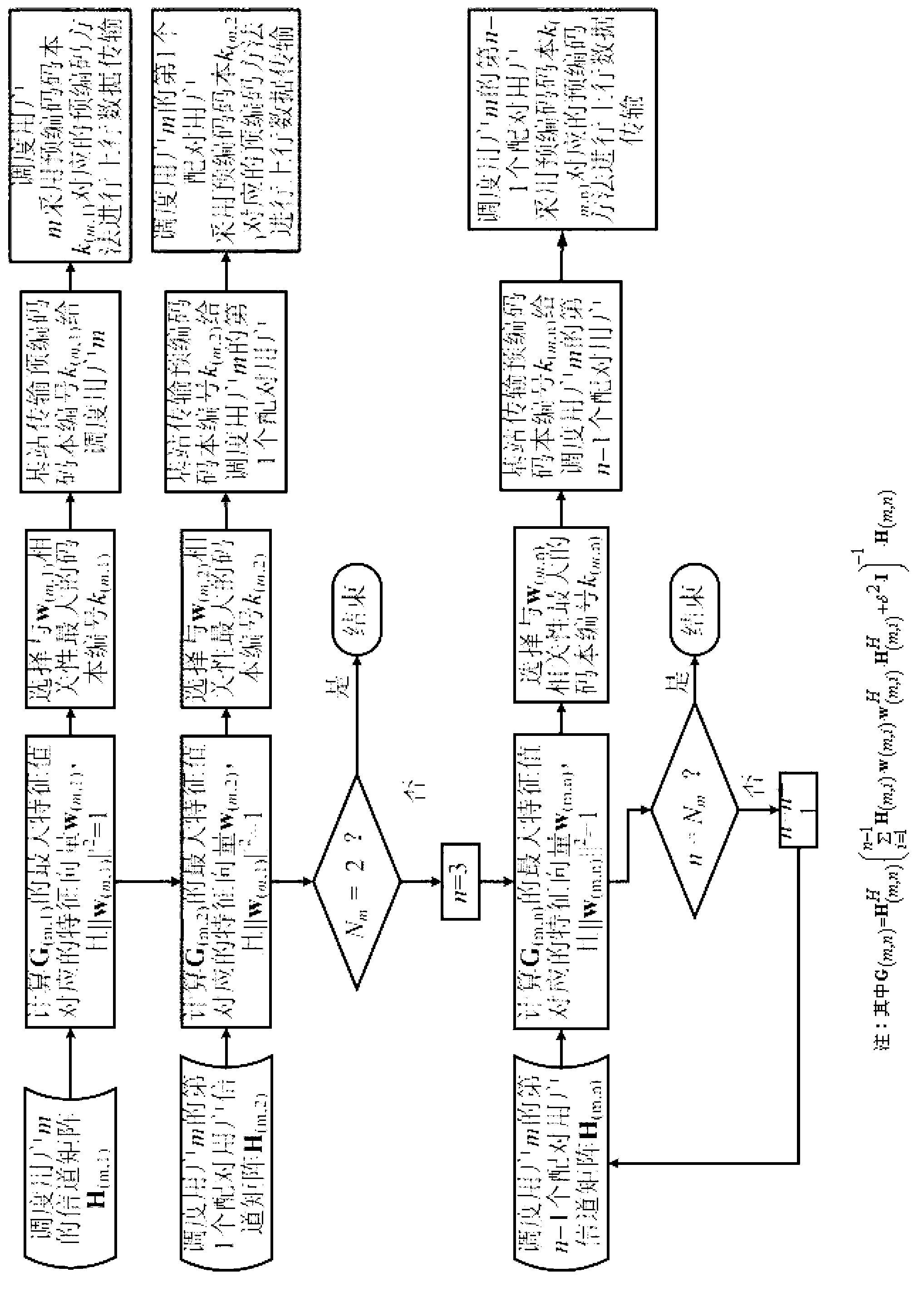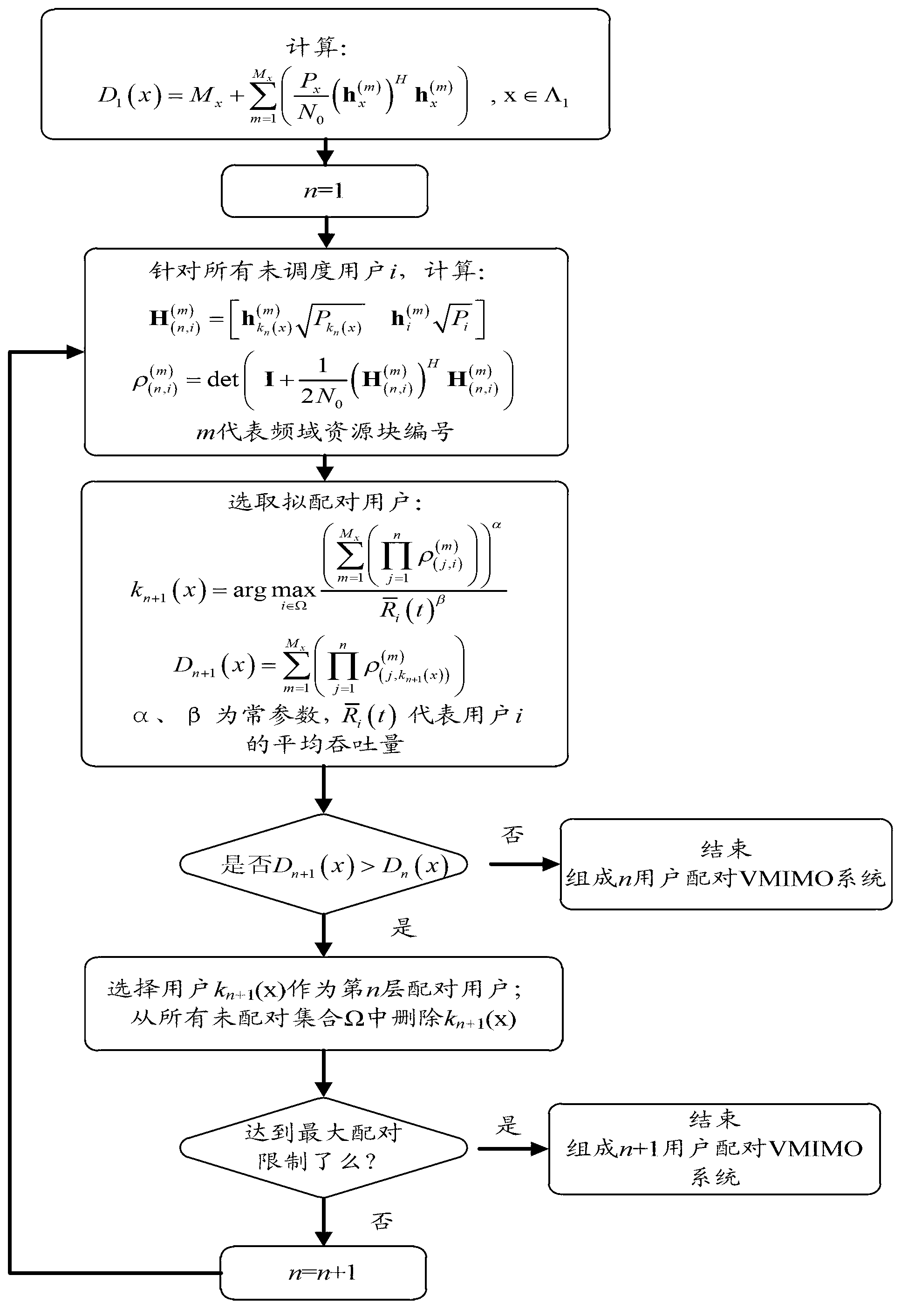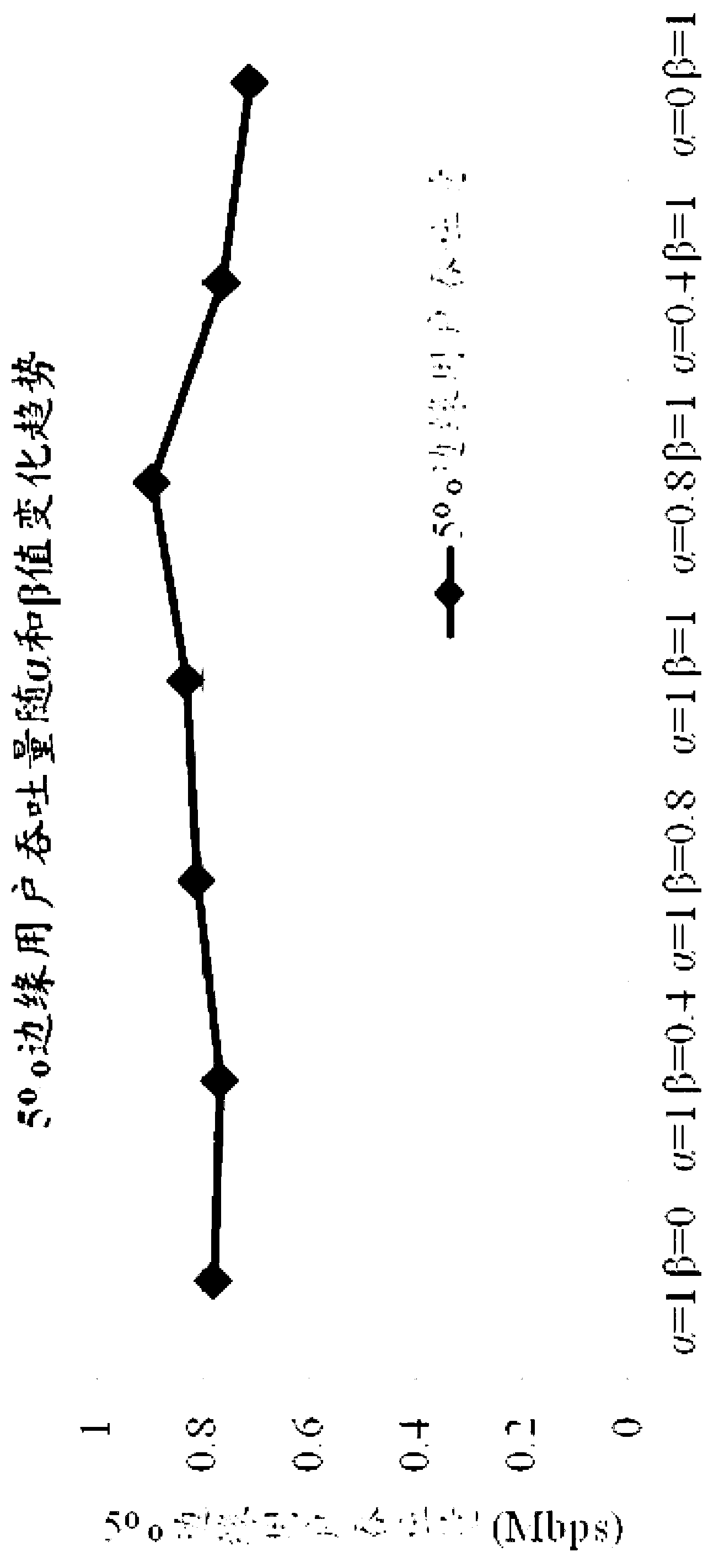Beam forming algorithm of multi-user pairing virtual multi-input multi-output (MIMO) system
A beamforming, multi-user technology, applied in diversity/multi-antenna systems, transmission systems, space transmit diversity and other directions, which can solve the problem of low transmission efficiency
- Summary
- Abstract
- Description
- Claims
- Application Information
AI Technical Summary
Problems solved by technology
Method used
Image
Examples
specific Embodiment 1
[0118] Specific embodiment one: as figure 1 As shown, the scheduling algorithm is used to schedule 10 users on the entire user frequency band, and then the pairing algorithm is used to pair the 10 scheduling users to form a 2-user virtual multiple input and output system (the number of scheduling users is 10, and the 10 scheduling users are respectively There is a paired user, so a 2-user virtual multiple input and output system is formed), at this time M=10, N m =1.
[0119] Step 1: Determine the uplink beamforming vector w of the 10 scheduled users in the virtual multiple-input-output system (1,1) 、w (2,1) ...,w (10,1) , the w (1,1) 、w (2,1) ...,w (10,1) are the matrices The eigenvector corresponding to the largest eigenvalue, and ||w (1,1) || 2 =1,||w (2,1) || 2 =1,...,||w (10,1) || 2 = 1, where are the channel matrices between the transmit antennas of the scheduled users 1, 2, ..., 10 and the base station receive antennas when transmitting data uplink in ...
specific Embodiment 2
[0125] Specific embodiment two: use the scheduling algorithm to schedule 5 users on the entire user frequency band, and then use the determinant pairing algorithm to pair the 5 scheduling users to form a 3-user virtual multiple input and output system. At this time, M=5, N m =2(m=1,2,...,5).
[0126] Step 1: Determine the uplink beamforming vector w of the 5 scheduled users in the virtual MIMO system (1,1) 、w (2,1) ...,w (5,1) , the w (1,1) 、w (2,1) ...,w (5,1) are the matrices The eigenvector corresponding to the largest eigenvalue, and ||w (1,1) || 2 =1,||w (2,1) || 2 =1,...,||w (5,1) || 2 = 1, where are the channel matrices between the transmit antennas of the scheduled users 1, 2, ..., 5 and the base station receive antennas when transmitting data uplink in the virtual multiple-input-output system. When calculating the beamforming matrices of the five scheduled users, the Interference with other users to this user.
[0127] Step 2: The base station calcul...
specific Embodiment 3
[0138] like figure 2 As shown, the pairing process is as follows when the number of paired users is n=3:
[0139] Step 0: Set k 1 (x) represents user x itself, k 2 (x) represents the first paired user of user x, k 3 (x) represents the second paired user of user x, ..., k n+1 (x) represents the nth paired user of user x, i∈Ω, Ω represents the set of users who have not allocated resource blocks when the VMIMO system transmits data uplink, Λ 1 is the set of users who have allocated resource blocks when the VMIMO system transmits data uplink, Ω and Λ 1 The collection of is the entire user collection.
[0140] Step 1: Calculate the channel capacity value D of user x according to formula (45) 1 (x)
[0141] D 1 ( x ) = M x + Σ m = 1 M ...
PUM
 Login to View More
Login to View More Abstract
Description
Claims
Application Information
 Login to View More
Login to View More - R&D
- Intellectual Property
- Life Sciences
- Materials
- Tech Scout
- Unparalleled Data Quality
- Higher Quality Content
- 60% Fewer Hallucinations
Browse by: Latest US Patents, China's latest patents, Technical Efficacy Thesaurus, Application Domain, Technology Topic, Popular Technical Reports.
© 2025 PatSnap. All rights reserved.Legal|Privacy policy|Modern Slavery Act Transparency Statement|Sitemap|About US| Contact US: help@patsnap.com



